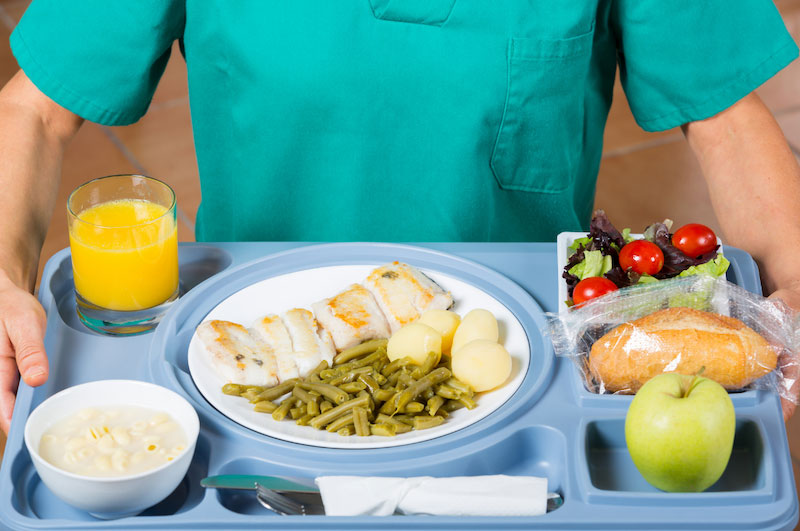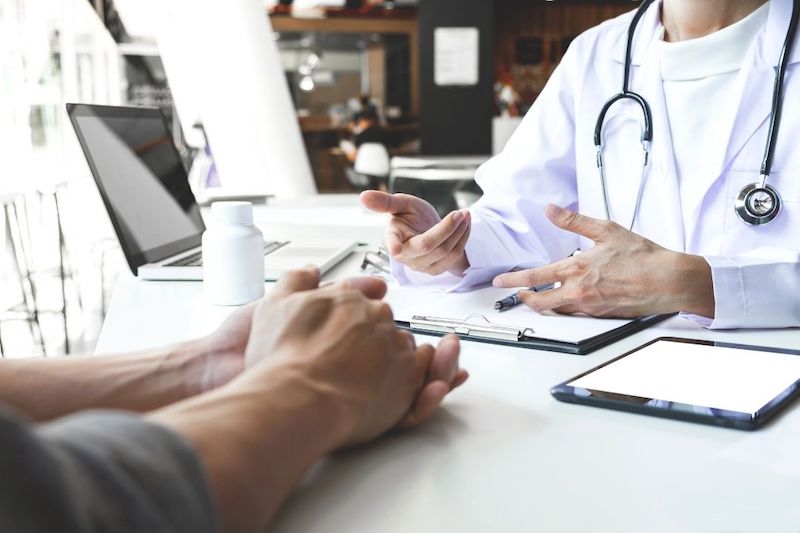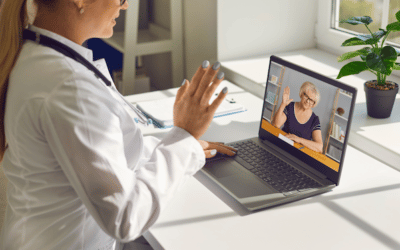You’re having trouble eating and your family doctor referred you for a swallowing assessment. You book an appointment and make your way to the hospital. There, you’re greeted by a speech-language pathologist or an S-LP.
This article describes what to expect when you arrive at the clinic for your assessment.
What to bring at your swallowing assessment
You may wish to bring a companion or loved one to your appointment. It can be helpful if these individuals are familiar with your medical conditions. In addition, you should bring all the necessary supplies you would typically use at home including such things as glasses, hearing aids, dentures, supplemental oxygen and mobility aids.
The swallowing assessment team
Swallowing assessments are primarily carried out by a speech-language pathologist (S-LP) as they are trained in evaluating, diagnosing and treating swallowing disorders (dysphagia). Registered dietitians may also be a part of your assessment, to assist, should there be nutrition concerns such as unintentional weight loss associated with your swallowing disorder.
The swallowing assessment
Interview
You will be asked to describe your symptoms, their frequency, and anything else you think may be important for your team to know. Next, you may be asked a series of questions that will help focus in on the nature of the swallowing disorder. Examples of questions include:
- When did your swallowing problem start? How often does it happen? Has it gotten worse? Are you having any pain when you swallow?
- Do you cough with solids or liquids?
- Does food stick, and where? (i.e., throat vs. chest)
- Does your food ever come back up?
- Has there been any recent weight loss?
- Do you feel any burning or sticking in the chest?
- What do you do to help your difficulties? (e.g., cutting food into small pieces, taking fluids to “wash down” solids)
Looking in your mouth
Your S-LP will look in your mouth taking note of general oral hygiene, condition of teeth or fit of dentures (if you have and use them). Next, the S-LP may complete a general assessment of the muscles inside your mouth to determine if there are impairments that could potentially impact eating and swallowing. Specifically, your S-LP will be checking asymmetry, strength, rate and range of motion and coordination of the lips and tongue. The S-LP you see and their team may also listen to how you speak and what your voice sounds like. While this may seem odd, difficulties with voice and speech may give additional hints to what is happening to your swallow.
Watching you eat a meal

Depending on where your assessment takes place, your S-LP will likely watch you eat and drink various items. This may include a full meal tray or select items such as water, applesauce, pudding or soft solids. The clinician will be watching for eating behaviors such as your posture, how quickly or slow you are eating and the size of your food bites. In addition, your S-LP will be looking for signs of eating and swallowing impairments including chewing difficulties, food left over in your mouth without you knowing about it, coughing / choking, throat clearing or change in how your voice sounds at the end of the meal.
Additional Tools
A portion of your assessment may include a more detailed examination of your swallow function. This would be completed if the nature of the swallowing disorder cannot be adequately diagnosed by watching you eat. It can also help clarify the exact location of the problem (e.g., mouth / throat / esophagus) and potential strategies that may be beneficial to improve eating or drinking.
Videofluoroscopic Swallowing Study (X-ray movie of your swallow)
If this is something your S-LP asks you to do, rest assured that he or she will walk you through all the steps. In general, you will be given various items to eat and drink that have been mixed with barium. Barium is a chalky substance that S-LPs add to food so that it shows up on the x-ray. Barium won’t do anything to you; it simply lets the S-LP and the radiologist see how food and liquid moves through your mouth and throat. These two professionals will be watching your muscles and how they work. The S-LP can use this information to determine what foods are safest for you to eat and drink and if there any swallowing exercises that could help with your recovery.
Fiberoptic Endoscopic Evaluation of Swallowing (A video of the swallow from inside the throat)
If this option is recommended, a tiny flexible camera is placed in your nose then moved into your throat. This approach also assesses how the muscles are moving but looks directly at the tissues of the throat during swallows. Because this test is not an x-ray, there is no radiation involved. Like the VFSS, the test identifies the safest textures to eat and drink and gives information about treatment options.
Counseling

Following the assessment, the S-LP will discuss the details of the swallowing disorder with you and your family. If the difficulties are mainly confined to inside your mouth (e.g., chewing / difficulty moving your tongue) or your throat (food or fluid “going the wrong way”), your S-LP will guide you on how to best manage eating safely and efficiently. This could include swallowing exercises to help strengthen the muscles and improve coordination or strategies such as taking smaller sips and sitting upright when eating. It may also include modifications to the food and fluids you consume. For example, some difficulties are resolved by eating softer, moister solids. For other people, thickening fluids can be very helpful, as it gives the throat muscles more time to react and can improve the safety of the swallow.
If the dysphagia (or swallowing difficulty) appears to be related to an issue with food moving through the esophagus to the stomach, your S-LP may recommend further investigation or potentially a visit with a Gastroenterology specialist.
Your S-LP will make careful notes about what he or she sees at this first appointment. It’s possible that they may recommend to your family doctor that further investigation may be necessary. Why? Well, dysphagia is a symptom. If it’s not obvious what’s causing the difficulty in swallowing, your team of healthcare professionals will do their due diligence to find out. This may include visits to other specialists such as a neurologist (i.e., brain doctor) or an Ear Nose and Throat doctor.
Rest assured, there is a team of trained professionals here to help you. If you’re experiencing difficulties swallowing, talk to your doctor and ask for a referral to a S-LP.
About Mobili-T: Mobili-T is the innovative wireless sEMG biofeedback device that helps you live well with dysphagia.





